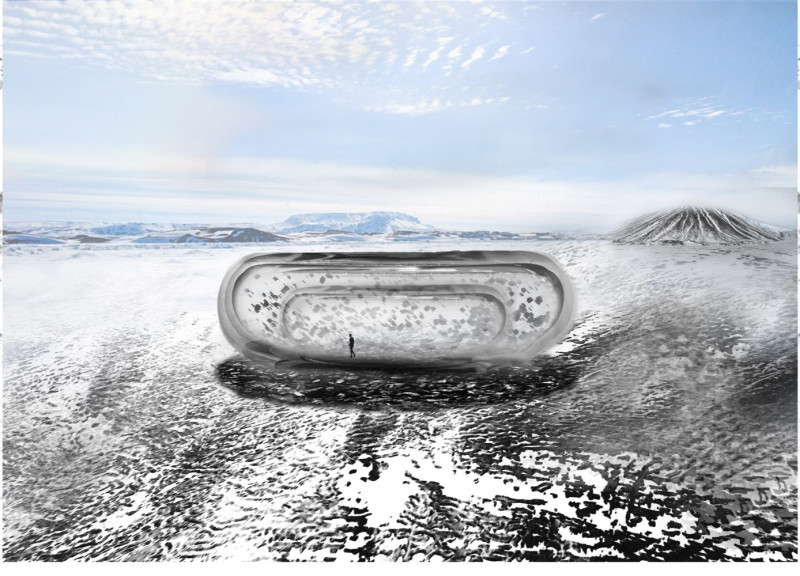5 key facts about this project
The museum is designed as a translucent vessel, located in the unique landscape of Iceland. The goal is to immerse visitors in the local environment and its cultural narratives. By drawing on the characteristics of Icelandic intensity, the design translates these elements into a spatial experience that connects with both heritage and the natural world.
Spatial Dynamics
-
The design emphasizes spatial dynamics with a carefully placed circulation void that allows natural light to move throughout the structure. This void helps sunlight reach the lower exhibition areas, enhancing the interaction with artwork and artifacts. As visitors move through the space, they experience a changing environment, with light and shadow shifting throughout the day, reflecting the variations in natural light found in the Icelandic landscape.
Materiality and Form
-
The architecture features a double-layered enclosure made from alumina mineral glass, a key component of the museum. This material choice ensures clarity and transparency, allowing for unobstructed views of the surrounding area while providing a cozy atmosphere indoors. The outer layer of glass acts as a lens, capturing the colors of the sky, especially during the auroras, and protecting the inside from harsh weather.
Environmental Integration
-
Incorporating a geothermal labyrinth beneath the museum serves to warm the air trapped within the glass layers. This system prevents snow and ice from building up, keeping the outer surface clear and visible even during winter. This design element demonstrates an awareness of the local climate, highlighting a commitment to sustainability and responsible design.
Auditory Experience
-
The design includes features like reverb chambers within the building that enhance the sound experience. These chambers amplify the natural sounds associated with Iceland’s volcanic activity, enriching the overall experience for visitors. As they explore the museum, guests are surrounded by not just sights but also the meaningful sounds that connect to Iceland's geography and culture.
Visitors can observe how the curved glass reflects the vibrant auroras, creating a dynamic visual experience that changes with the atmosphere, blending the museum into its stunning surroundings.





















































